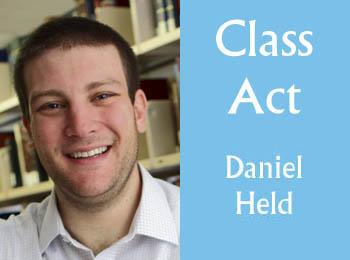As a child, I would accompany my parents each erev Pesach to deliver a bottle of wine to our rabbi. This year, as we ate our final bit of chametz, my rabbi left a message on my cellphone wishing us Chag Samayach.
The role of the rabbi has changed.
I read with great interest the columns by Rabbis Elyse Goldstein (March 8) and Dow Marmur (March 29), as they reflected on the life of Rabbi Gunther Plaut.
Rabbi Goldstein asks, “Who would you consider a giant who can stand in the shadow that Rabbi Plaut cast?” and Rabbi Marmur responds, “I believe that the time when rabbis cast shadows has passed.”
Pulpit rabbis like Rabbi Plaut were once the academic scholars of Judaism, but with the proliferation of university Jewish studies programs, that role has shifted. Rabbis were once the primary educators of our community, but with graduate level programs in Jewish education, day and supplementary schools now demand new levels of pedagogic training.
As Rabbi Marmur describes, the rabbi once sat atop the hierarchical pyramid of religious life, holding power by virtue of position and title. This is no longer the case. Religious life has moved from the vertical to the horizontal. My rabbi does not sit next to the Ark facing the congregation but has a seat among the congregants. He shares his pulpit with scholars and congregants, and he refers to himself by his first name.
To me, these changes have fortified, not diminished, my rabbi’s authority. My rabbi holds authority, not because of his title or position, but because I choose to invest authority in him, and I make this decision because of his authentic application of his knowledge and himself. My rabbi is a teacher just as he is a community organizer; he shepherds us through lifecycle events just as he builds community; he offers pastoral care just as he calls us before the holidays. My relationship with my rabbi is not one of reverence or awe, but one of warmth and mutual admiration.
I recognize, however, that my use of the term “my rabbi” is rare among my generation. I lament that few feel a personal connection to a rabbi. For most, “my rabbi” refers to the rabbi of the synagogue to which they pay dues, or the rabbi of the congregation where they had their bat mitzvah 20 years ago. It refers to a position rather than a person.
The rabbi as preacher, who captivates audiences and compels attendance and religiosity through sermons and teachings, has passed his prime. Today’s rabbi is a community organizer who shares authentically of himself and connects to the personal life journey of his congregants both sociologically and theologically.
The rabbi who seeks to cast a shadow has been rejected by my generation. The rabbi can no longer be a stand-alone figure, separated by title and pulpit. Today’s rabbi must work together with the community to shed light on the possibilities of Jewish life. It is only through this collaborative process that more of my peers will be able to speak of “my rabbi.”
